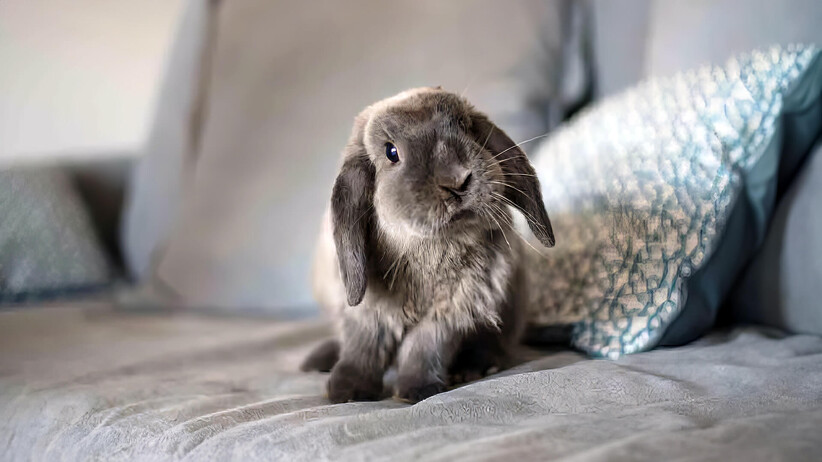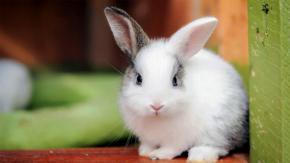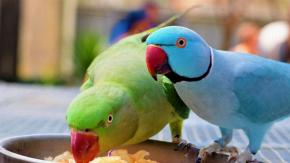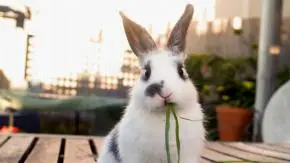Congratulations if you’re considering adopting a fluffy companion or have decided to bring one into your home! Rabbits make wonderful and affectionate pets, and we’re here to help you every step of the way.
In this blog, we’ll cover everything you need to know about preparing for your new bunny’s arrival, ensuring a smooth transition, and providing them with a loving and safe environment to thrive. From bunny-proofing your home to understanding their behaviour, health needs, and dietary requirements – we’ve got you covered.
So, let’s hop right in and discover the world of bunny care and companionship together!
Preparing for Your New Bunny
Before bringing a bunny home, preparing to ensure a smooth transition and a safe environment for your new furry friend is important. Here are some essential steps to take:
Bunny Supplies Checklist
To provide proper care for your bunny, it’s crucial to have the right supplies on hand. Here’s a checklist of items you’ll need:
Food: High-quality rabbit pellets and fresh vegetables.
Water: A water dispenser or bowl for your bunny’s hydration needs.
Bedding: Soft, safe bedding material for your bunny’s comfort.
Toys: Engaging toys to keep your bunny mentally stimulated and entertained.
Grooming Tools: A brush, nail clippers, and a toothbrush for maintaining your bunny’s grooming needs.
Make sure to gather these supplies before bringing your bunny home to ensure a welcoming and well-equipped environment.
Rabbit Enclosure Setup and Safety
Creating a suitable enclosure is vital for your bunny’s well-being. Here are some important considerations for setting up a safe and comfortable rabbit enclosure:
Ventilation: Ensure proper airflow within the enclosure to prevent heat build-up and maintain fresh air circulation.
Flooring: Choose a flooring material that is safe, non-slippery, and easy to clean, such as solid plastic or covered wire mesh.
Hiding Spots: Provide hiding spots like tunnels or small boxes to give your bunny a sense of security.
Bunny-Proofing Your Home
To ensure the safety of your bunny and protect your belongings, it’s essential to bunny-proof your home. Here are some steps to make your living space bunny-friendly:
Secure Electrical Cords: Cover or secure electrical cords to prevent your bunny from chewing on them and risking electrical hazards.
Remove Toxic Plants: Identify and remove any plants that are toxic to rabbits from your home or the areas your bunny will have access to.
Designated Play Areas: Set up designated play areas where your bunny can roam freely and safely without access to hazardous items.
Protect Furniture and Belongings: Use protective coverings or barriers to prevent your bunny from damaging furniture or chewing on valuable items.
Welcoming Your Bunny Home
Bringing a bunny home is an exciting moment filled with anticipation. To ensure a smooth transition for your new furry companion, here are some critical steps to take:
Bringing Your Bunny Home: First Steps
Once you arrive home with your bunny, providing a calm and secure environment is essential. Here are the immediate actions you should take:
Quiet Space: Set up a quiet and peaceful area where your bunny can relax and feel safe. Avoid loud noises or sudden disturbances during this crucial period.
Food and Water: Offer fresh food and water to your bunny to help them settle in and satisfy their immediate needs. Ensure these are easily accessible within their designated area.
Monitoring Behaviour: Observe your bunny’s behaviour closely. It’s normal for them to be cautious and wary in their new surroundings. Take note of any signs of stress or discomfort.
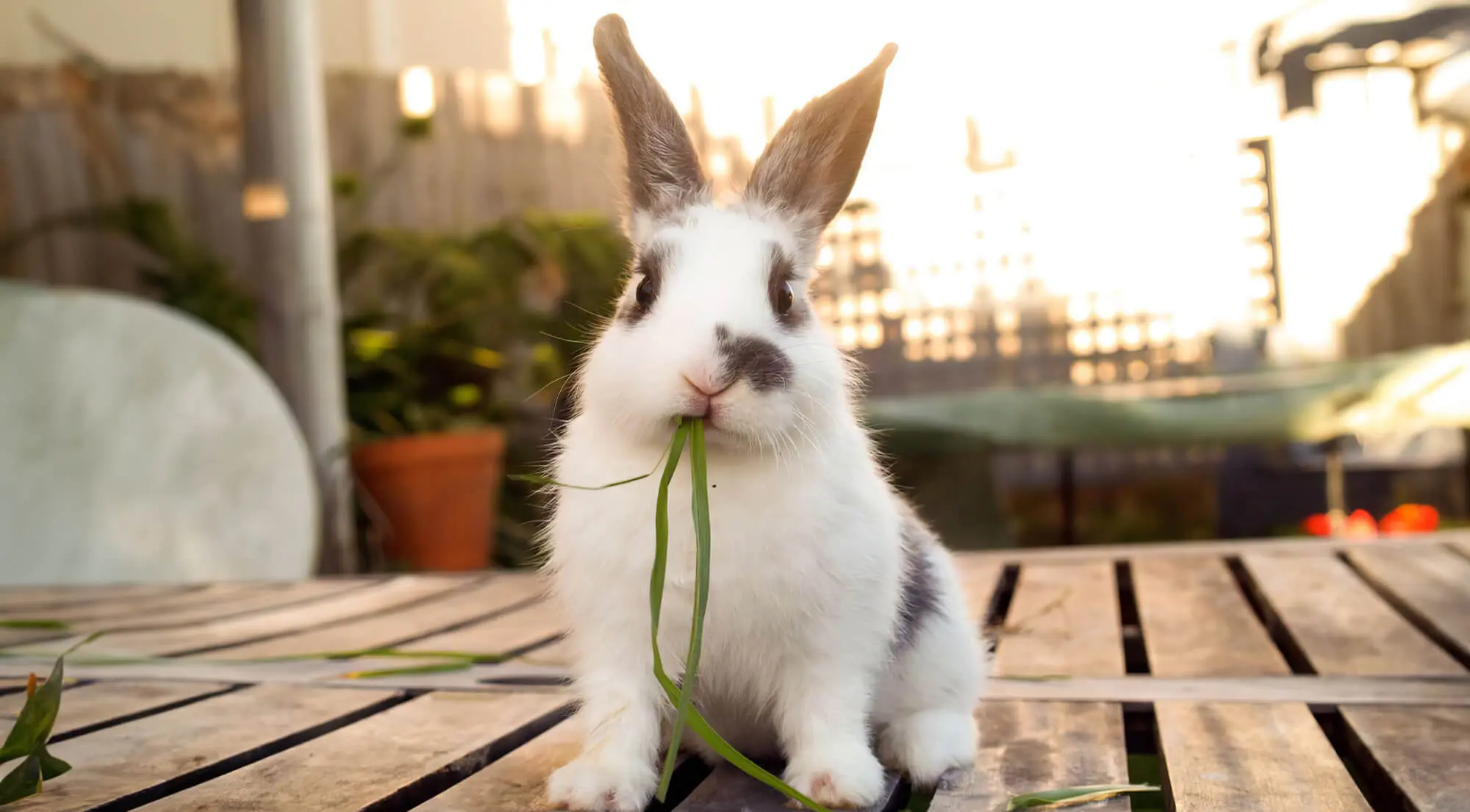
Introducing Your Bunny to Its New Environment
Helping your bunny adapt to their new surroundings is a gradual process. Here are some tips to facilitate a smooth introduction:
New Scents: Introduce your bunny to the smells of its new home by placing a small piece of bedding from its enclosure in different areas. This helps familiarise them with their environment.
Exploring the Enclosure: Allow your bunny to explore its enclosure at its own pace. They may need some time to get accustomed to the layout and become comfortable.
Avoiding Sudden Changes: Minimise sudden changes or disruptions in their environment during the initial days. Gradual adjustments will help your bunny feel more secure.
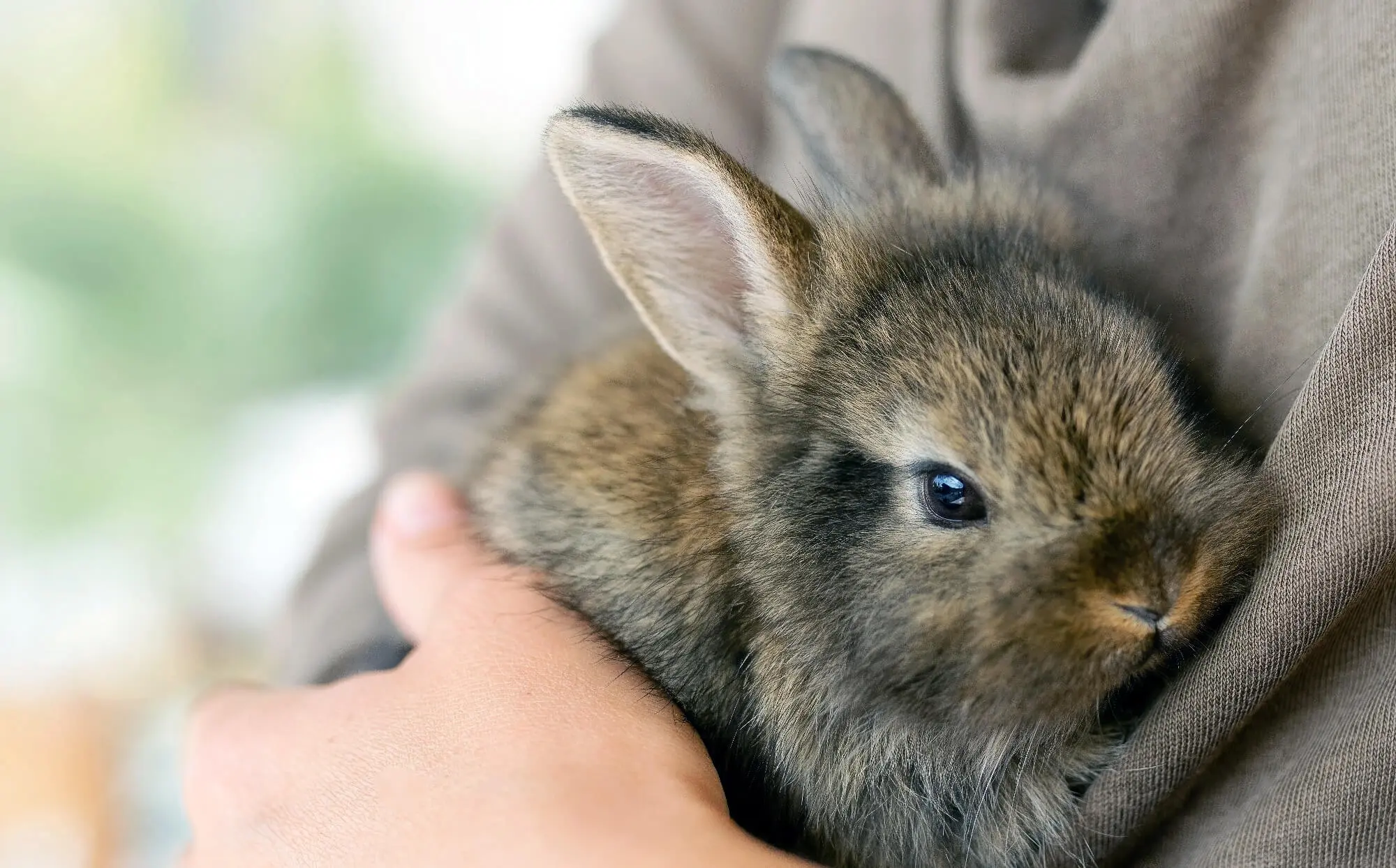
Bonding with Your Bunny
Building a strong bond with your bunny is a rewarding experience that requires time, patience, and understanding. Here are some tips for fostering a deep connection:
Gentle Interactions: Approach your bunny with gentle movements and a calm demeanour. Speak softly and avoid sudden gestures that might startle them.
Positive Reinforcement: Reward your bunny’s positive behaviour with treats and praise. This encourages trust and reinforces the bond between you.
Quality Time: Spend time with your bunny regularly, engaging in activities like gentle petting, grooming sessions, or simply sitting nearby. This helps them feel comfortable in your presence.
Feeding and Nutrition
Proper nutrition is vital for the health and well-being of your bunny. Understanding their dietary needs and establishing a feeding routine will contribute to their overall vitality. Here’s what you need to know:
Rabbit Diet Essentials: Hay, Pellets, and Fresh Vegetables
A well-balanced diet for your bunny consists of several key components. These include:
Hay: High-quality hay should form the foundation of your bunny’s diet. Timothy hay is an excellent choice, providing essential fibre for their digestive system and promoting dental health.
Pellets: Choose specially formulated rabbit pellets that are rich in essential nutrients. Ensure the pellets are fresh, and avoid those with added fillers or sugary ingredients.
Fresh Vegetables: Introduce a variety of fresh vegetables to your bunny’s diet. Leafy greens like kale, spinach, and romaine lettuce are excellent choices. Remember to introduce new vegetables gradually to avoid digestive upset.
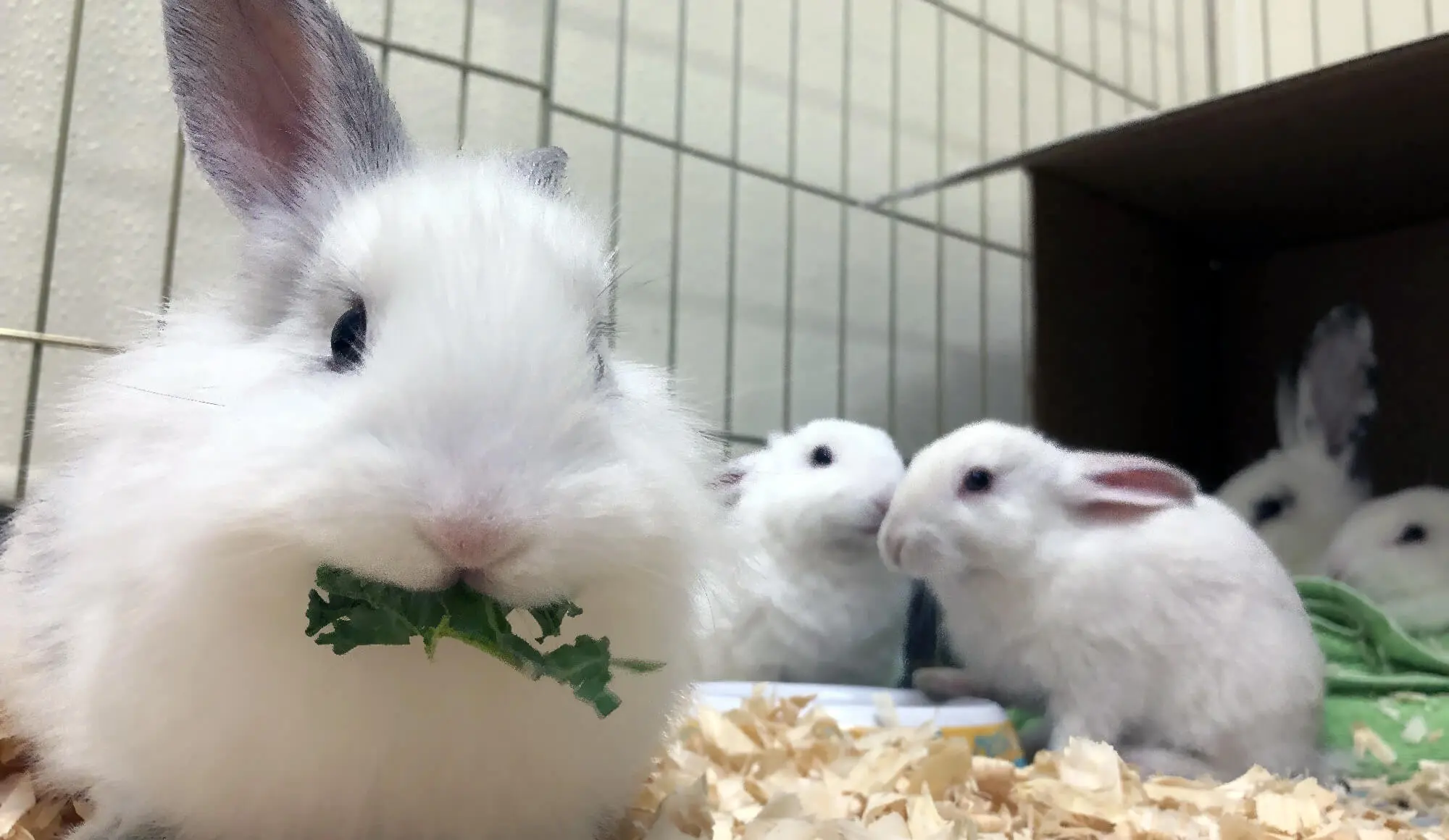
Safe Treats and Dietary Considerations
While treats can be fun to interact with your bunny, choosing them wisely and considering their dietary impact is essential. Here are some guidelines to keep in mind:
Safe Treats: Opt for safe and healthy treats specifically designed for rabbits. Examples include small pieces of fresh fruit, such as apple or pear, or herbs like parsley and cilantro. Always offer treats in moderation.
Portion Control: Treats should only constitute a small portion of your bunny’s overall diet. Excessive treats can lead to weight gain and potential health issues. Balance is key.
Avoiding Harmful Foods: Certain foods are toxic to rabbits and should be strictly avoided. These include chocolate, caffeine, onions, garlic, and foods high in sugar or salt.
Establishing a Feeding Routine
Consistency and routine are essential when it comes to feeding your bunny. Here are some tips for establishing a feeding schedule:
Portion Sizes: Provide appropriate portion sizes based on your bunny’s age, size, and activity level. Avoid overfeeding, as obesity can lead to various health problems.
Hydration: Ensure your bunny has access to fresh, clean water at all times. Check the water dispenser regularly to make sure it’s functioning properly.
Monitoring Eating Habits: Keep an eye on your bunny’s eating habits. Sudden changes in appetite or significant weight loss may indicate an underlying health issue. If you notice any concerning signs, consult a veterinarian.
Bunny Care and Health
Proper care and attention to your bunny’s health are crucial for their well-being and happiness. You can ensure your bunny stays healthy and thriving by implementing regular grooming practices, preventive measures and knowing when to seek veterinary care. Here’s what you need to know:
Rabbit Grooming: Brushing, Nail Trimming, and Dental Care
Regular grooming is essential for maintaining your bunny’s cleanliness and overall health. Here are some key aspects of bunny grooming:
Brushing: Brushing your bunny’s fur helps remove loose hair, prevents matting, and promotes a healthy coat. Use a soft-bristled brush or a specialised rabbit grooming tool to gently brush their fur, paying attention to areas prone to tangling.
Nail Trimming: Keeping your bunny’s nails at a proper length is essential to prevent discomfort or injury. Use pet nail clippers or seek assistance from a professional if you’re unsure how to trim them safely.
Dental Care: Bunnies’ teeth grow continuously, so it’s crucial to ensure proper dental care. Provide your bunny with appropriate chew toys and a diet that promotes good dental health. Regular check-ups with a veterinarian can help identify any dental issues early on.
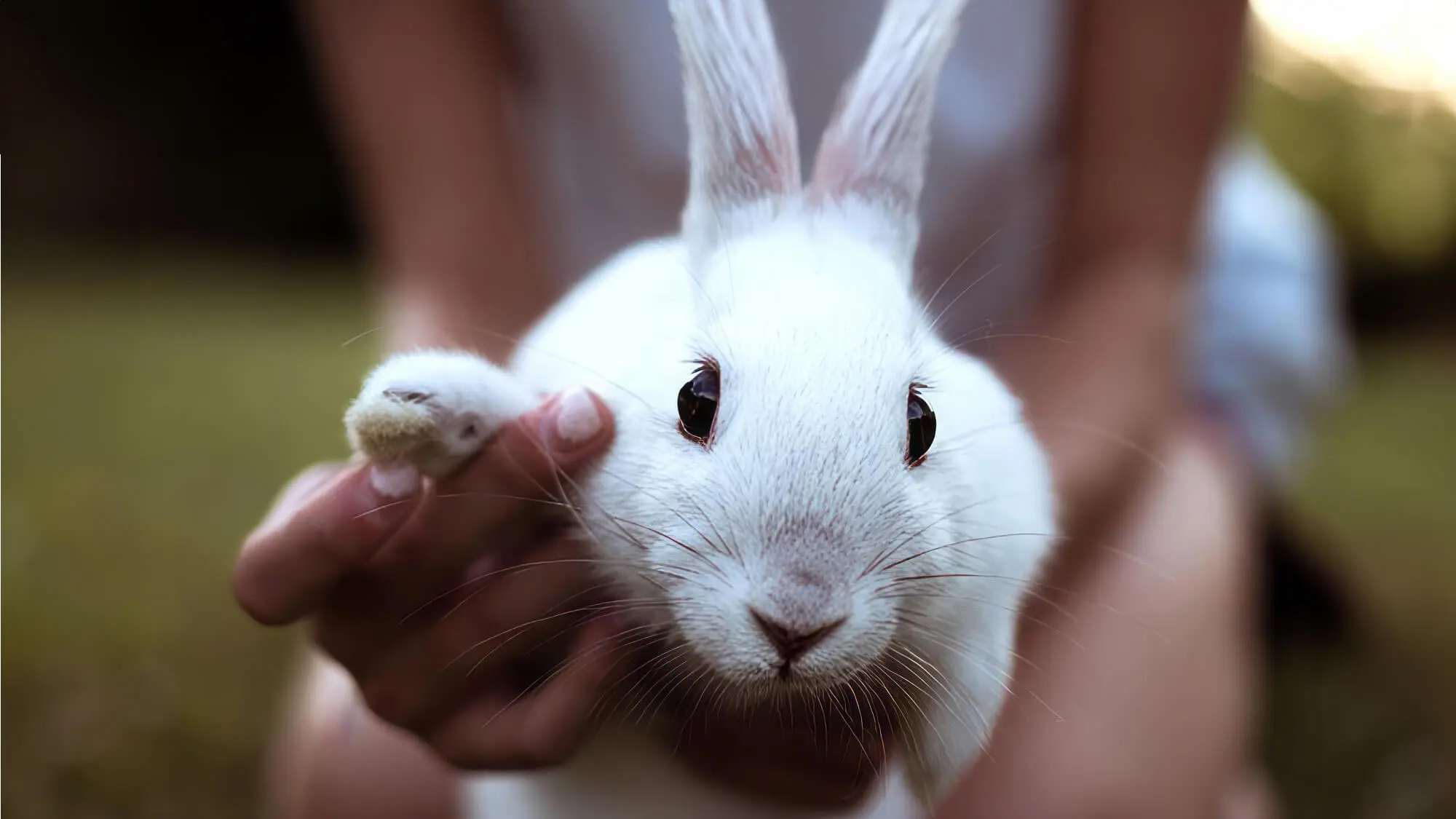
Preventive Health Measures: Vaccinations and Check-ups
Preventive healthcare plays a vital role in keeping your bunny healthy and preventing diseases. Here are some essential measures to consider:
Vaccinations: Consult with a veterinarian experienced in rabbit care to determine if vaccinations are recommended for your bunny. Vaccinations can protect against certain diseases prevalent in rabbits, such as viral hemorrhagic disease (VHD).
Regular Check-ups: Schedule regular check-ups with a rabbit-savvy veterinarian to monitor your bunny’s overall health. These visits allow for early detection of any potential health issues and provide an opportunity to address any concerns or questions.
Parasite Control: Discuss parasite control options with your veterinarian, especially for fleas, ticks, mites, and worms. Regular preventive treatments can help protect your bunny from external and internal parasites.
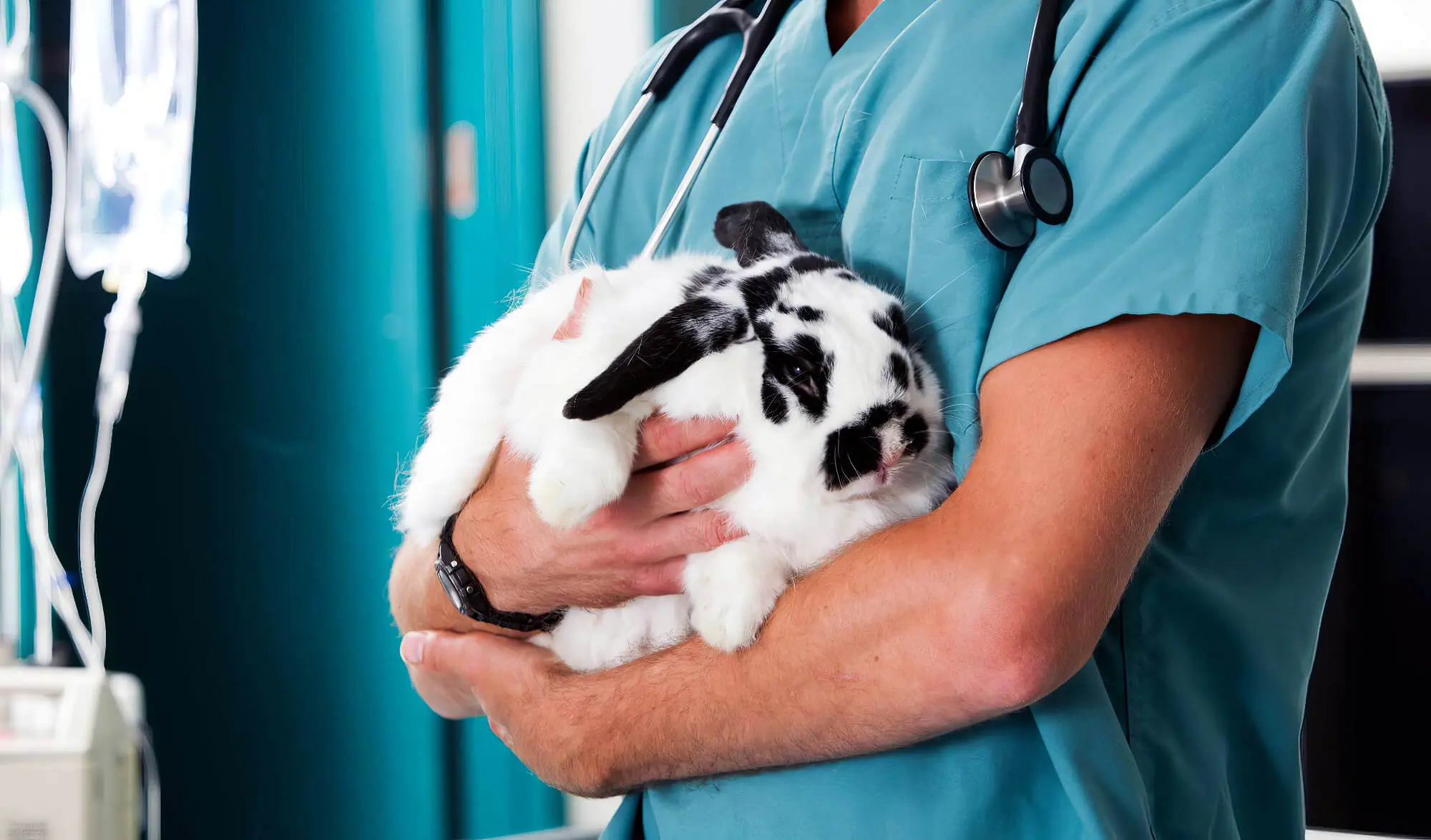
Common Health Issues and When to Seek Veterinary Care
While preventive measures are crucial, it’s essential to be aware of common health issues that rabbits may encounter. Recognising signs of illness and knowing when to seek veterinary care can make a significant difference. Here are some common health issues and when to take action:
Gastrointestinal Issues: Rabbits are prone to digestive problems like gastrointestinal stasis. If you notice a decreased appetite, reduced stool production, or signs of discomfort (such as teeth grinding or hunching), seek immediate veterinary care.
Respiratory Infections: Respiratory infections can occur in rabbits, leading to symptoms like sneezing, nasal discharge, or laboured breathing. If you observe these signs, consult your veterinarian for proper diagnosis and treatment.
Dental Problems: Dental issues, including overgrown teeth or dental abscesses, can cause significant discomfort and affect your bunny’s eating ability. See veterinary attention if you notice excessive drooling, reluctance to eat, or weight loss.
Rabbit Behaviour and Socialisation
Understanding and effectively interacting with your bunny’s behaviour is key to fostering a strong bond and ensuring their overall well-being. By learning about their body language, and communication cues and providing opportunities for socialisation and play, you can create a happy and fulfilling environment for your furry friend. Let’s delve into the essential aspects of rabbit behaviour and socialisation:
Understanding Rabbit Behavior: Body Language and Communication
Rabbits have their unique ways of expressing themselves through body language and communication. By observing and interpreting these signals, you can better understand their emotions and needs. Here are some common aspects of rabbit behaviour:
Ear Positions: A rabbit’s ears can indicate alertness and mood. Upright ears signify attentiveness and curiosity, while flattened or laid-back ears may suggest fear or aggression.
Tail Movements: Rabbits often use their tails to communicate. A relaxed, still tail typically indicates a calm bunny, while a flicking or thumping tail may indicate annoyance or alarm.
Binkies: Binkies are joyful expressions of a rabbit’s happiness. They involve energetic jumps, twists, and mid-air kicks. Witnessing binkies is a positive sign that your bunny feels content and secure.
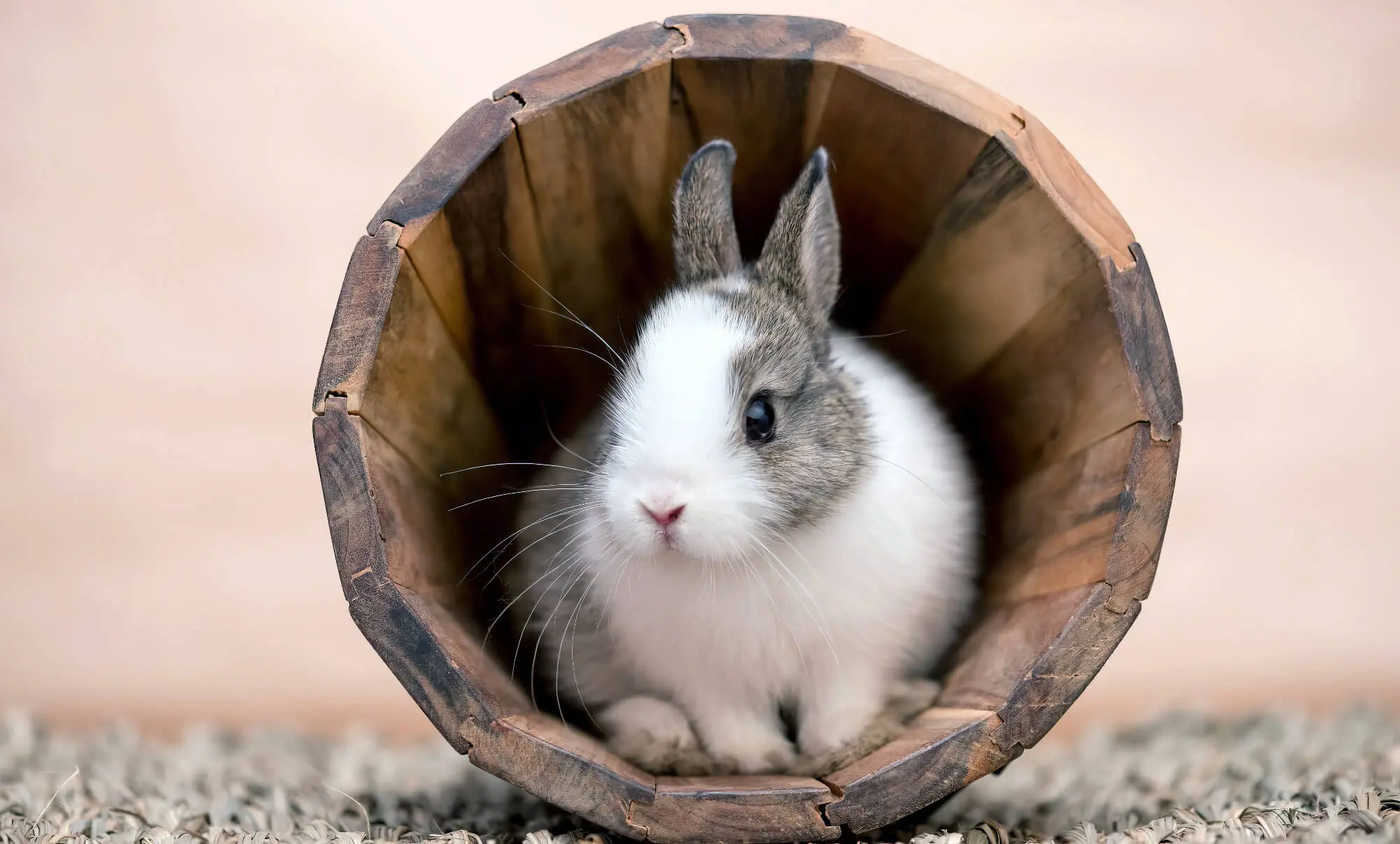
Socialising Your Bunny: Building Trust and Bonding
Socialisation plays a crucial role in developing a strong bond with your bunny and helping them feel secure and comfortable in their environment. Here are some tips for socialising your bunny:
Gaining Trust: Earning your bunny’s trust is essential. Spend time near them, allowing them to approach you at their own pace. Offer gentle pets and speak softly to create a positive association with your presence.
Allowing Exploration: Provide a safe and enriching environment for your bunny to explore. This includes providing tunnels, toys, and hiding spots to encourage natural behaviours and mental stimulation.
Positive Interactions: Use positive reinforcement, such as offering favourite treats or gentle strokes, to reward your bunny’s good behaviour. Avoid loud noises, sudden movements, or actions that may frighten them.
Creating a Stimulating Environment: Bunnies thrive in an environment that stimulates their natural instincts. Rotate toys, provide forage activities, and set up play areas where they can run, jump, and engage in playful behaviours.
Playtime and Exercise for a Happy Rabbit
Playtime and exercise are vital for a rabbit’s physical and mental well-being. Regular activity keeps them physically fit, prevents boredom, and promotes a happy disposition. Consider the following for a fulfilling playtime experience:
Suitable Toys: Offer a variety of toys that cater to your bunny’s natural instincts. Safe chewing toys, tunnels, puzzle feeders, and balls they can push around can keep them entertained and mentally stimulated.
Safe Play Areas: Set up designated play areas where your bunny can roam freely under supervision. Ensure the space is bunny-proofed, eliminating any hazards or potential escape routes.
Daily Interaction: Dedicate time each day for interactive play with your bunny. This can include gentle chasing games, obstacle courses, or simply providing them with space to hop and explore while you interact and bond with it.
Outdoor Time: If weather and safety permit, supervised outdoor time in a secure enclosure can offer additional enrichment for your bunny. Ensure the area is escape-proof and free from harmful plants or predators.
The First Few Days: What to Expect
Bringing your bunny home is an exciting time, but it’s important to understand that it may take some time for them to adjust to their new environment. Here’s what you can expect during the first few days:
Adapting to the New Environment
Moving to a new home can be a significant change for your bunny. They will need time to acclimate to their surroundings and establish security. Here are a few tips to help them adjust:
Quiet Space: Create a quiet and comfortable space for your bunny to retreat to initially. This could be a separate room or a designated area with an enclosure. Ensure the area is free from excessive noise, foot traffic, and other pets.
Familiar Items: Place familiar items in the new environment, such as bedding or a piece of cloth carrying their scent. This can provide a sense of familiarity and help them feel more at ease.
Gradual Introduction: Allow your bunny to explore its new surroundings at its own pace. Initially, limit their access to a smaller area and gradually expand their space as they become more comfortable.
Consistent Routine: Establish a consistent routine for feeding, playtime, and interaction. This helps provide a sense of predictability and stability for your bunny.
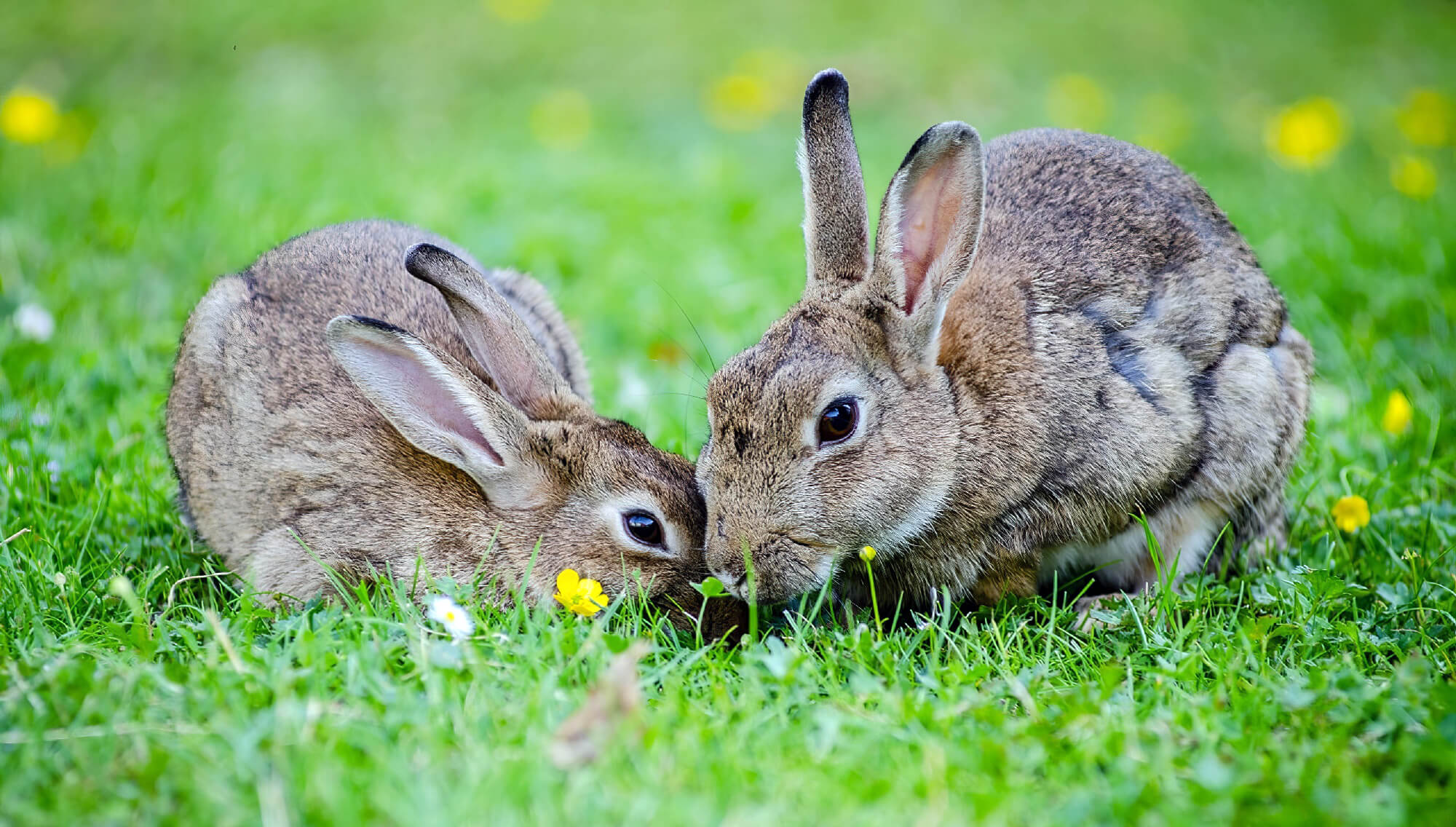
Patience and Observation: Allowing Your Bunny to Settle
During the initial days, it’s crucial to be patient and give your bunny time to adjust. Here are some important points to remember:
Avoid Overwhelming Interactions: While wanting to interact with your new bunny is natural, allow them to approach you on their own terms. Avoid excessive handling or loud noises during the settling period.
Observe Body Language: Pay attention to your bunny’s body language. Signs of stress or fear may include hiding, excessive thumping, or avoiding interaction. If you notice these behaviours, give them more time and space to adjust.
Bonding Time: Spend quiet, calm moments near your bunny, allowing them to become familiar with your presence. Talk softly and offer gentle strokes if they seem receptive, but avoid forcing physical contact if they’re not ready.
Family Introduction: If you have other pets or family members, introduce them gradually and under supervision. Ensure everyone understands the need for a calm and gentle approach when interacting with the new bunny.
Monitoring Eating, Drinking, and Elimination Habits
Monitoring your bunny’s basic needs is crucial during the initial days. Keep an eye on the following:
Eating Habits: Offer your bunny their regular diet and monitor their appetite. It’s normal for them to eat less initially due to the stress of the transition. However, a complete loss of appetite or prolonged refusal to eat should be brought to the attention of a veterinarian.
Drinking Habits: Always provide fresh water and monitor your bunny’s drinking habits. Ensure they have access to water in a familiar and easily accessible container.
Elimination Habits: Check your bunny’s litter box regularly to monitor their elimination habits. It may take a little time for them to adjust to the new litter box location. Still, any significant changes in urination or stool consistency should be noted and discussed with a veterinarian.
Your Guide to a Hoppy Homecoming!
In conclusion, bringing a bunny home is an exciting and rewarding experience. By following the tips and guidelines outlined in this comprehensive guide, you can ensure a smooth transition for your new furry friend. Remember the importance of preparation, creating a safe environment, establishing a feeding routine, providing proper care and health measures, understanding rabbit behaviour, and allowing for adjustment in the first few days.
At Planet Pet, we are committed to helping you provide the best care for your bunny. Visit our store for a wide range of high-quality bunny supplies, including food, bedding, toys, and grooming tools. Our knowledgeable staff is ready to assist you in finding the perfect products to meet your bunny’s needs. Create a happy and healthy home for your bunny by shopping now at Planet Pet Store.
Remember, bringing a bunny home is just the beginning of a wonderful journey filled with love, companionship, and endless snuggles. Enjoy every moment with your new furry friend, and cherish the bond you will form. Happy bunny parenting!

